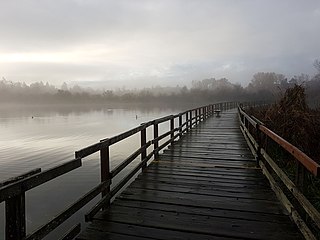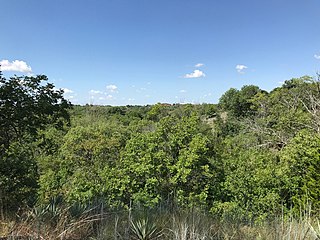
Bethlehem is a town in Litchfield County, Connecticut, United States. The population was 3,385 at the 2020 census, down from 3,607 at the 2010 census. The town is part of the Naugatuck Valley Planning Region. The town center is a historic district and a census-designated place (CDP).

Woodbury is a town in Litchfield County, Connecticut, United States. The town is part of the Naugatuck Valley Planning Region. The population was 9,723 at the 2020 census. The town center, comprising the adjacent villages of Woodbury and North Woodbury, is designated by the U.S. Census Bureau as the Woodbury Center census-designated place (CDP). Woodbury was founded in 1673.

Middlebury is a town in New Haven County, Connecticut, United States. The population was 7,574 at the 2020 census. The town is part of the Naugatuck Valley Planning Region. It is a suburb of the nearby city of Waterbury to its south, and is on the northern fringe of the New York metropolitan area.

Southbury is a town in western New Haven County, Connecticut, United States. It is north of Oxford and Newtown, and east of Brookfield. Its population was 19,879 at the 2020 census. The town is part of the Naugatuck Valley Planning Region.

A nature reserve is a protected area of importance for flora, fauna, funga, or features of geological or other special interest, which is reserved and managed for purposes of conservation and to provide special opportunities for study or research. They may be designated by government institutions in some countries, or by private landowners, such as charities and research institutions. Nature reserves fall into different IUCN categories depending on the level of protection afforded by local laws. Normally it is more strictly protected than a nature park. Various jurisdictions may use other terminology, such as ecological protection area or private protected area in legislation and in official titles of the reserves.

Swan Lake Christmas Hill Nature Sanctuary is a nature reserve located in Saanich, British Columbia. The sanctuary includes a lake, adjacent marshy lowlands, and the Nature House, as well as a good part of the summit regions of Christmas Hill.
Natural Lands is a non-profit land conservation organization with headquarters in Media, Pennsylvania, dedicated to the management, protection, and conservation of eastern Pennsylvania and southern New Jersey's native forests, fields, streams, and wetlands. The organization owns and manages 43 nature preserves—and one public garden totaling more than 23,000 acres—located in 13 counties in Pennsylvania and New Jersey. Nineteen of the preserves are open to the public for recreational use; the others have limited visitation due to the presence of sensitive ecosystems or limited facilities.

The Northeast Wilderness Trust is a non-profit conservation organization based in Montpelier, Vermont, working to preserve and restore forest landscapes in Maine, New Hampshire, Vermont, New York, Massachusetts, and Connecticut. Its mission is to conserve forever-wild landscapes for nature and people. It was founded in 2002.
Pioneers Park Nature Center, established in 1963, is a 668-acre (2.70 km2) nature preserve located within Pioneers Park, which is located at the intersections of South Coddington and West Van Dorn Streets in Lincoln, Nebraska. Both Pioneers Park and the Nature Center within it are operated by the Lincoln Parks and Recreation Department.

The Salmon River is formed at the confluence of the Blackledge and Jeremy rivers about one mile west of North Westchester, Connecticut. It drains 96,000 acres and courses for 10.4 miles (16.7 km) to Salmon Cove near Moodus where it flows into the Connecticut River. The Salmon River is probably the largest stream and watershed whose sources and mouth are entirely within the limits of Connecticut.

According to the California Protected Areas Database (CPAD), in the state of California, United States, there are over 14,000 inventoried protected areas administered by public agencies and non-profits. In addition, there are private conservation areas and other easements. They include almost one-third of California's scenic coastline, including coastal wetlands, estuaries, beaches, and dune systems. The California State Parks system alone has 270 units and covers 1.3 million acres (5,300 km2), with over 280 miles (450 km) of coastline, 625 miles (1,006 km) of lake and river frontage, nearly 18,000 campsites, and 3,000 miles (5,000 km) of hiking, biking, and equestrian trails.

The McLean Game Refuge is a 4,400 acres (1,800 ha) nature preserve with the overwhelming majority of the land being in the town of Granby, with smaller tracts of land on the Granby border in Simsbury and Canton, Connecticut. Senator and Governor of Connecticut, George P. McLean had purchased the land throughout his life. It was left to the McLean Fund upon his death in 1932 and remains open to the public today. In November 1973, 1,800 acres (730 ha) of the Refuge were designated a National Natural Landmark.

Norman Bird Sanctuary is a 325-acre (1.32 km2) bird sanctuary, nature preserve, environmental education center, and museum at 583 Third Beach Road in Middletown, Rhode Island overlooking the Atlantic Ocean.

The Connecticut Audubon Society, founded in 1898 and headquartered in Fairfield, Connecticut, is a nonprofit organization dedicated to "conserving Connecticut’s environment through science-based education and advocacy focused on the state’s bird populations and habitats." Connecticut Audubon Society is independent of the National Audubon Society (NAS), just as in the neighboring state of Massachusetts, where Massachusetts Audubon Society is independent of the NAS.

The Tree Hill Nature Center is a 501(c)(3) non-profit organization and wilderness preserve in Jacksonville, Florida, organized for the purpose of providing an educational experience for visitors to appreciate and learn about the natural environment in Jacksonville. The land was acquired to preserve and protect an urban wilderness area containing sensitive plants and animals from surrounding development. The city park opened in 1971.

Trout Brook Valley State Park Reserve is a 300-acre (120 ha) parcel owned by the state of Connecticut that is part of the larger Trout Brook Valley Preserve, located in Easton, Connecticut. The full conservation area covers 1,009 acres (408 ha) and comprises several contiguous parcels in the towns of Easton and Weston, bordering the southeast corner of the Saugatuck Reservoir. It is managed by the Aspetuck Land Trust. The state park portion of the preserve offers opportunities for hiking and hunting.

The Norcross Wildlife Sanctuary is a wildlife refuge in Monson, Massachusetts. Founded by Arthur Norcross in 1939, the 8,000 acre wildlife refuge was established to preserve, protect and propagate native flora and fauna. The refuge is part of the Norcross Wildlife Foundation, which awards loans and grants, and has helped preserve over 33,000 acres since 1939.

The Sharon Audubon Center is a wildlife sanctuary of the National Audubon Society in Sharon, Connecticut. The 1,147 acres (464 ha) of the Sharon Audubon Center property is primarily forest land with two ponds with 11 miles (18 km) of trails for visitors to use. Its facilities include a raptor aviary, a herb garden, a garden to attract birds and butterflies, a sugar house, a memorial room to Hal Borland, a small museum and store. Sharon Audubon Center is located at 325 Cornwall Bridge Road.

Charles E. Wheeler Wildlife Management Area is a 625-acre (253 ha) brackish tidal marsh, nature preserve and hunting area owned by the state of Connecticut located in Devon (village), Milford, New Haven County, Connecticut.

The Fort Worth Nature Center & Refuge is a nature center located between Lakeside and Lake Worth, Texas within Fort Worth, Texas, United States city limits. It consists of prairies, forests, and wetlands. The nature center offers a glimpse of what the Dallas–Fort Worth metroplex looked like before settlement. The center covers 3,621 acres (1,465 ha) and includes over 20 miles (32 km) of hiking trails. It is one of the largest city-owned nature centers in the United States.


















